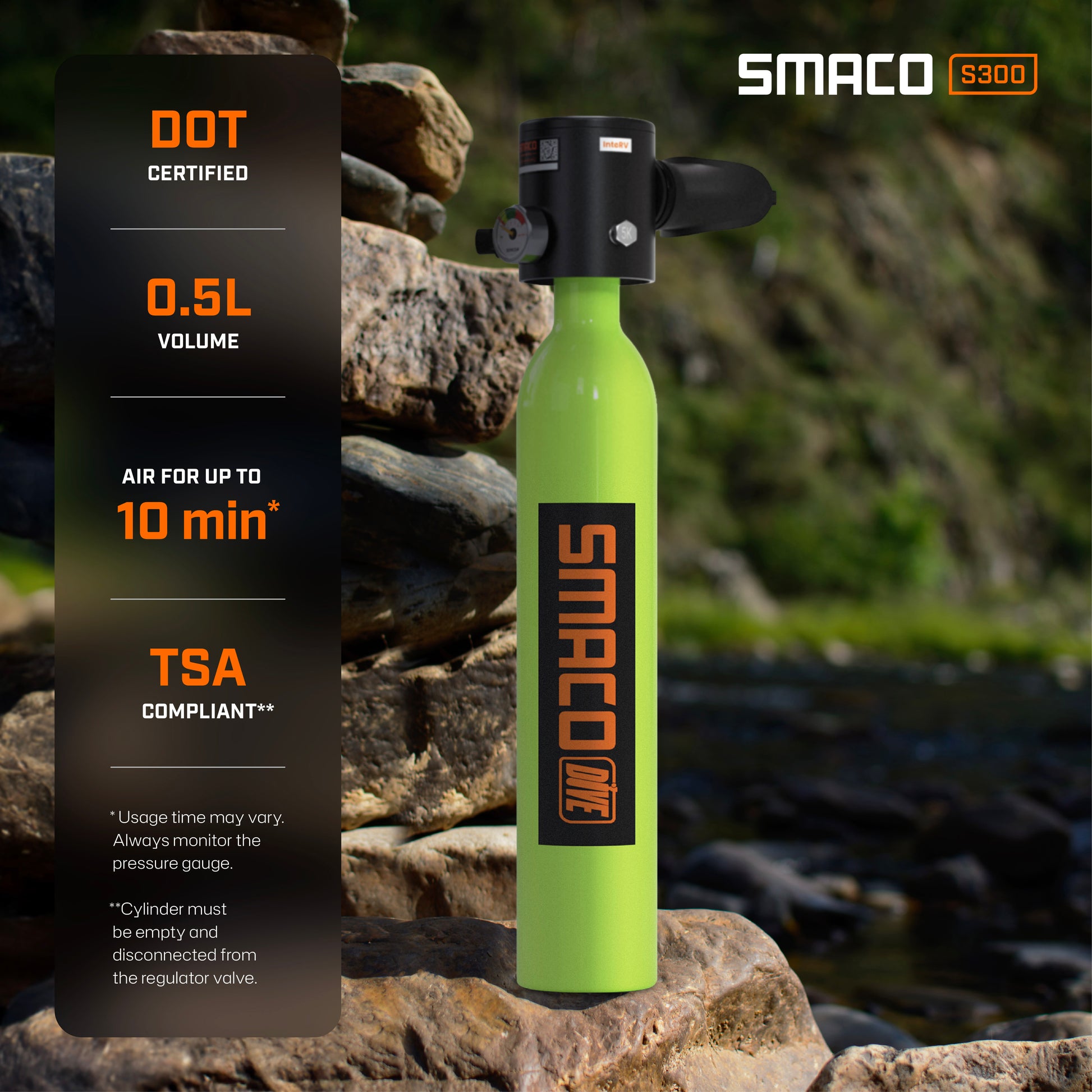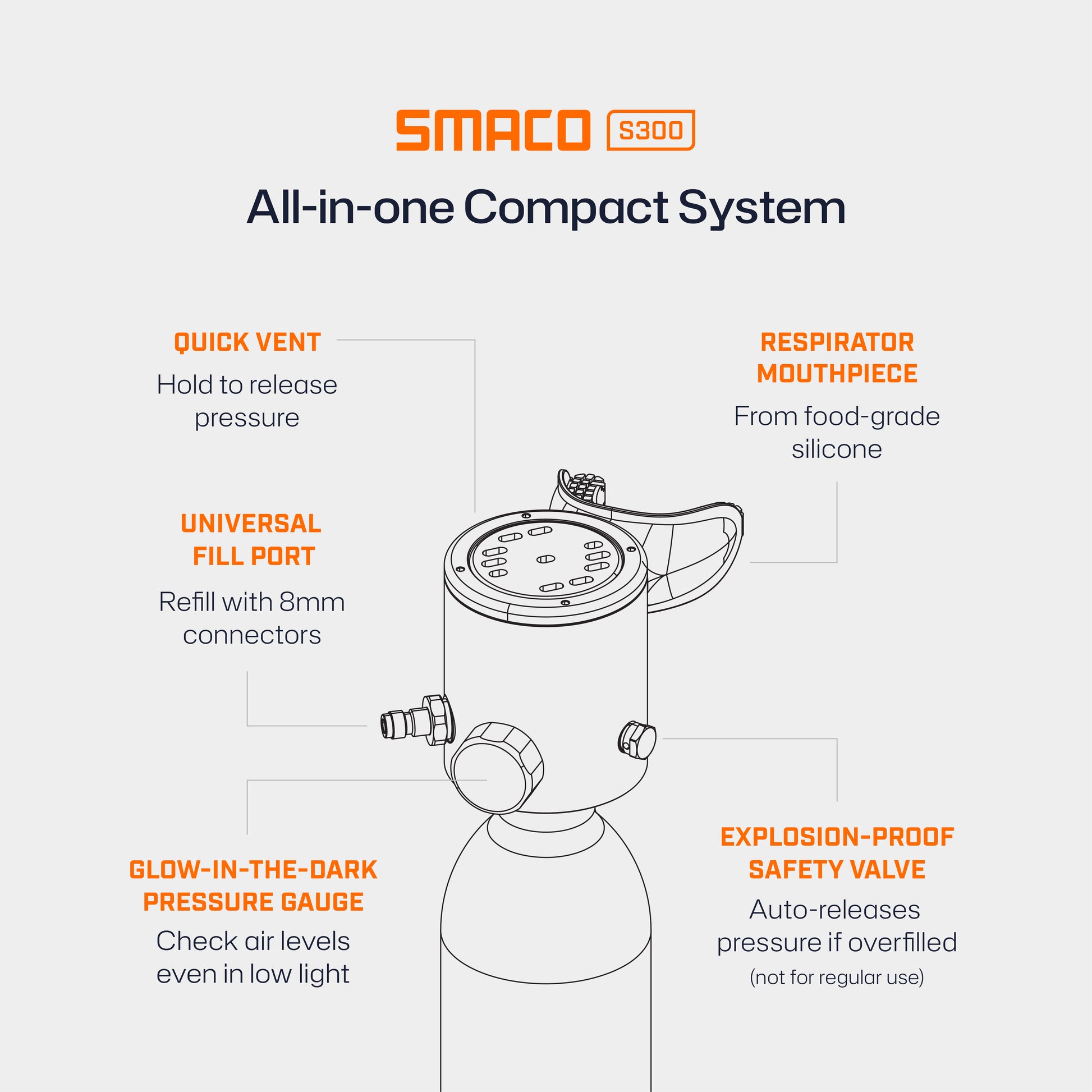Portable Diving Series
S300 0.5L Mini Scuba Tanks (2 Tanks)
S300 0.5L Mini Scuba Tanks (2 Tanks)
Impossibile caricare la disponibilità di ritiro
- 30-Day Returns
- One-Year Warranty
- 24/7 Chat Support
The S300's integrated respirator combines the regulator, pressure gauge, safety valve, vent, and mouthpiece into one streamlined unit—reducing bulk and simplifying your setup for quick dives and emergencies.
- CE, TUV, and DOT certified
- Up to 10 minutes of air per fill*
- Safety leash included
* Usage time will vary. For your safety, always monitor the pressure gauge and do not exceed 5 meters (16 ft) without proper certification.
Specifications
Specifications
Model: S300
Volume: 0.5 Lts
Working pressure: 200 bar / 3000 psi
Dimensions: 36.3 cm x 6 cm
Weight: 1.1 kg
Cylinder material: 6061 Aluminum
Regulator: Constant pressure
Share
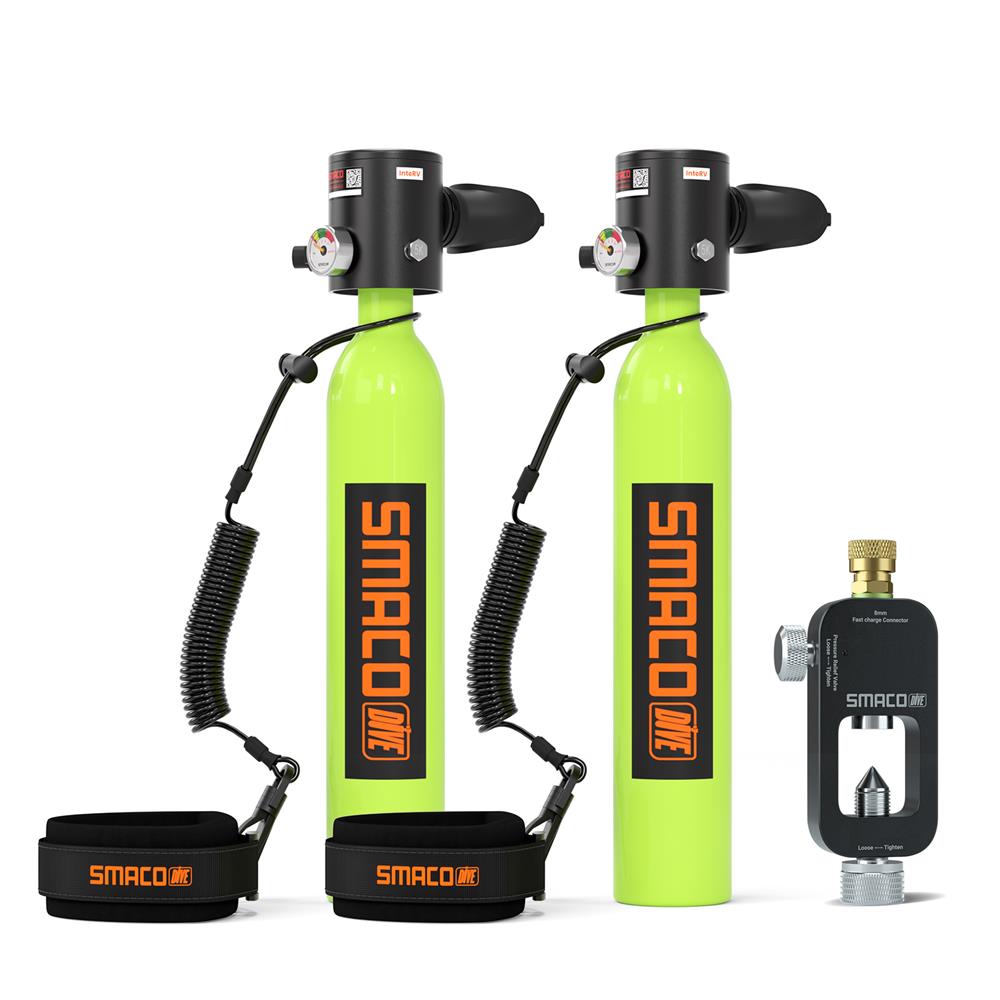
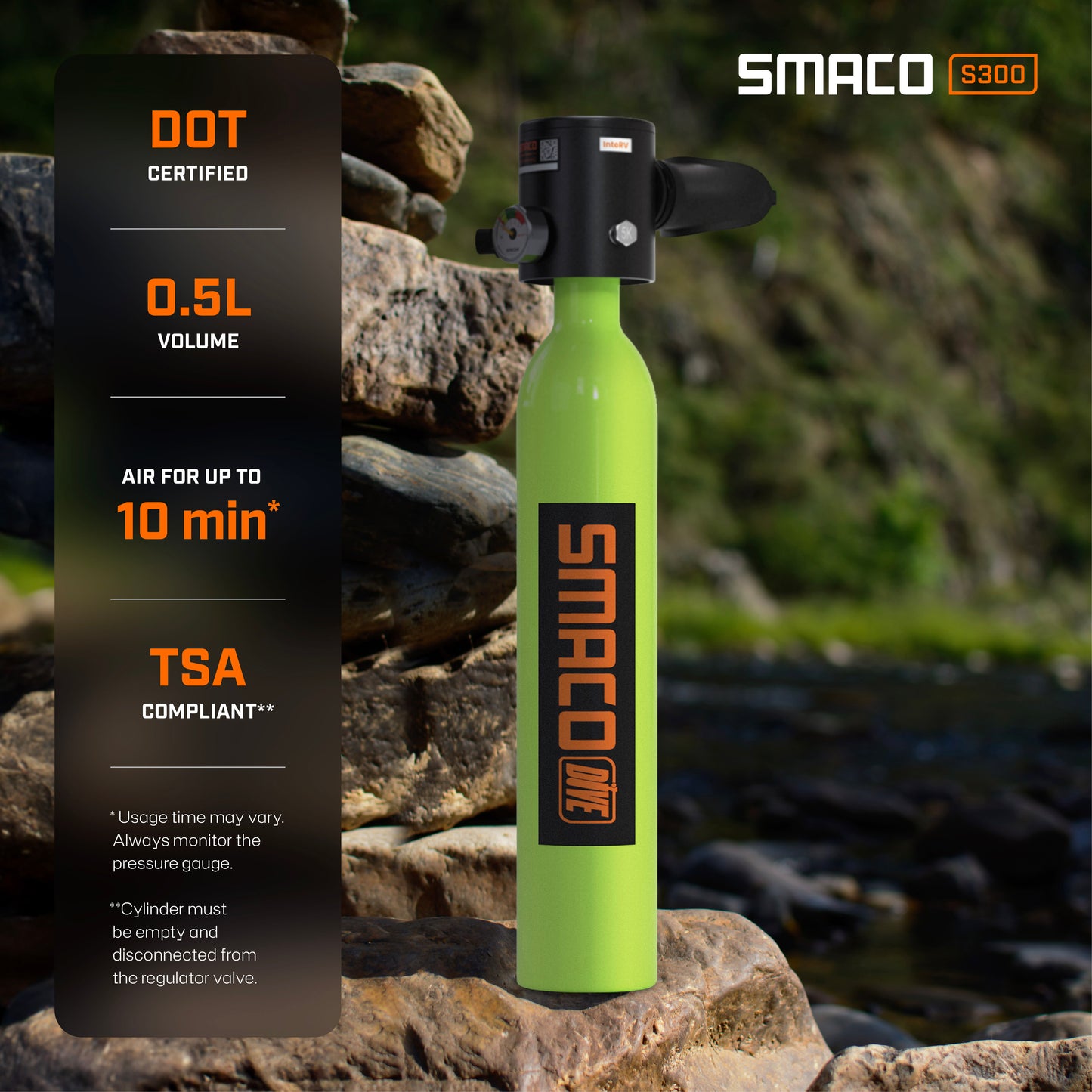
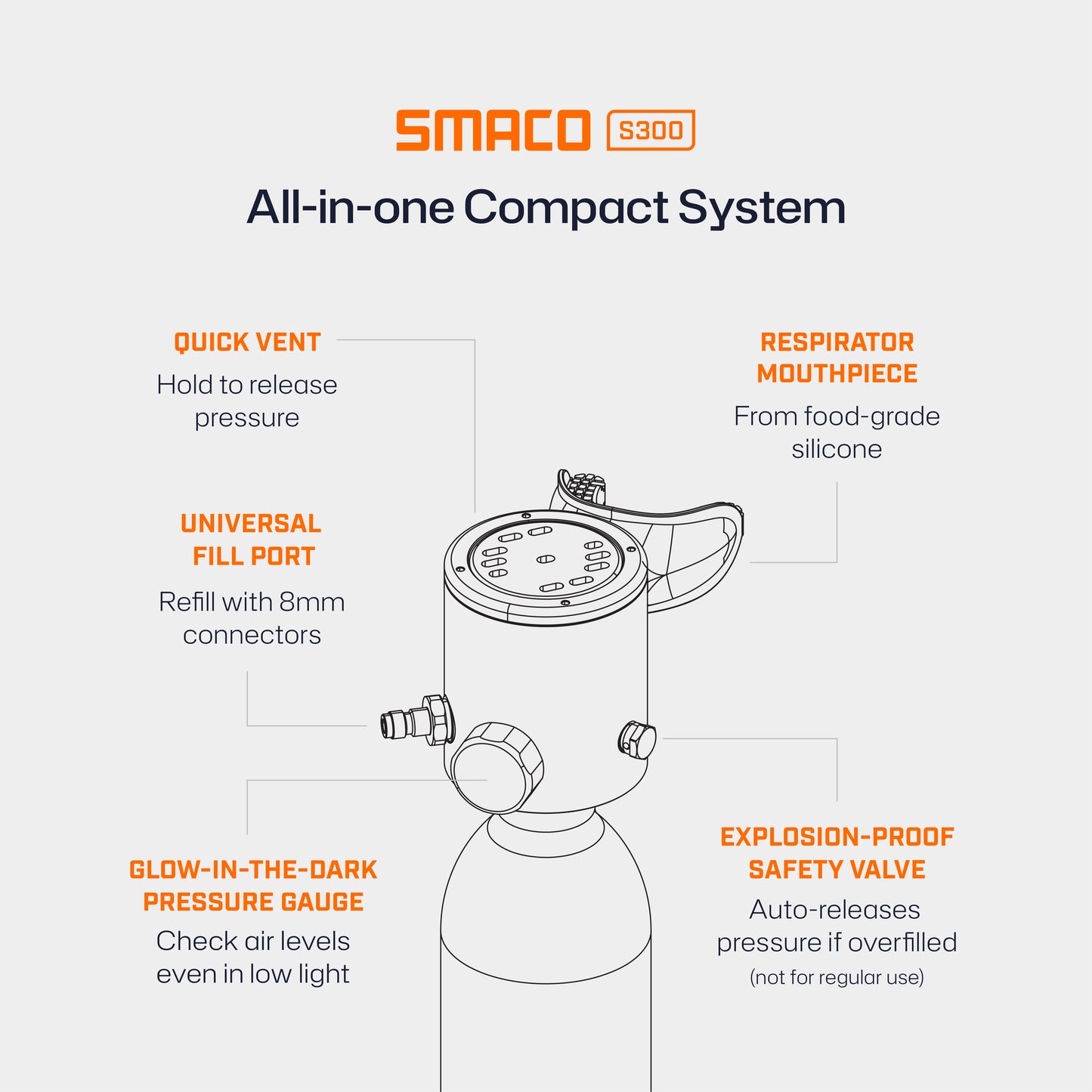
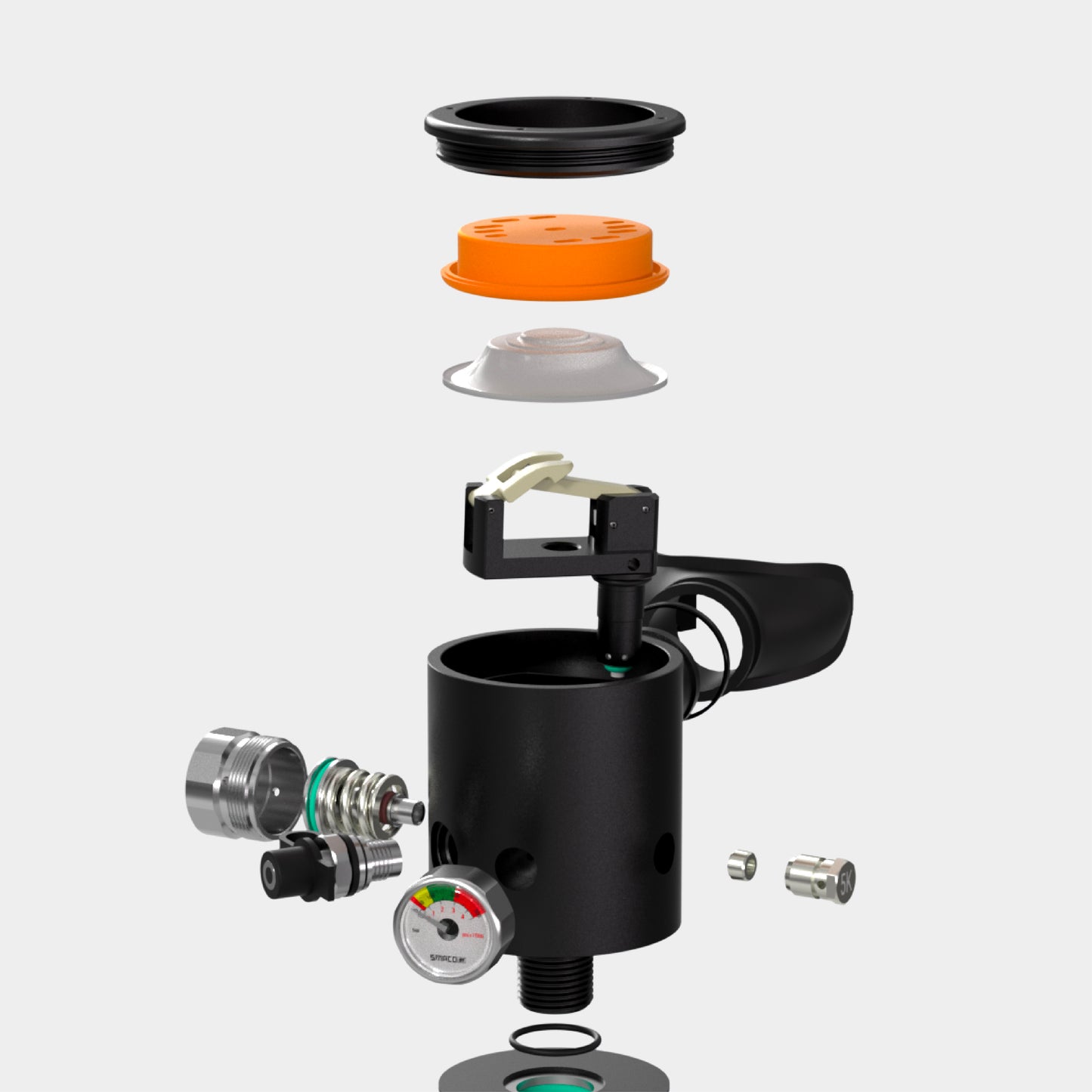
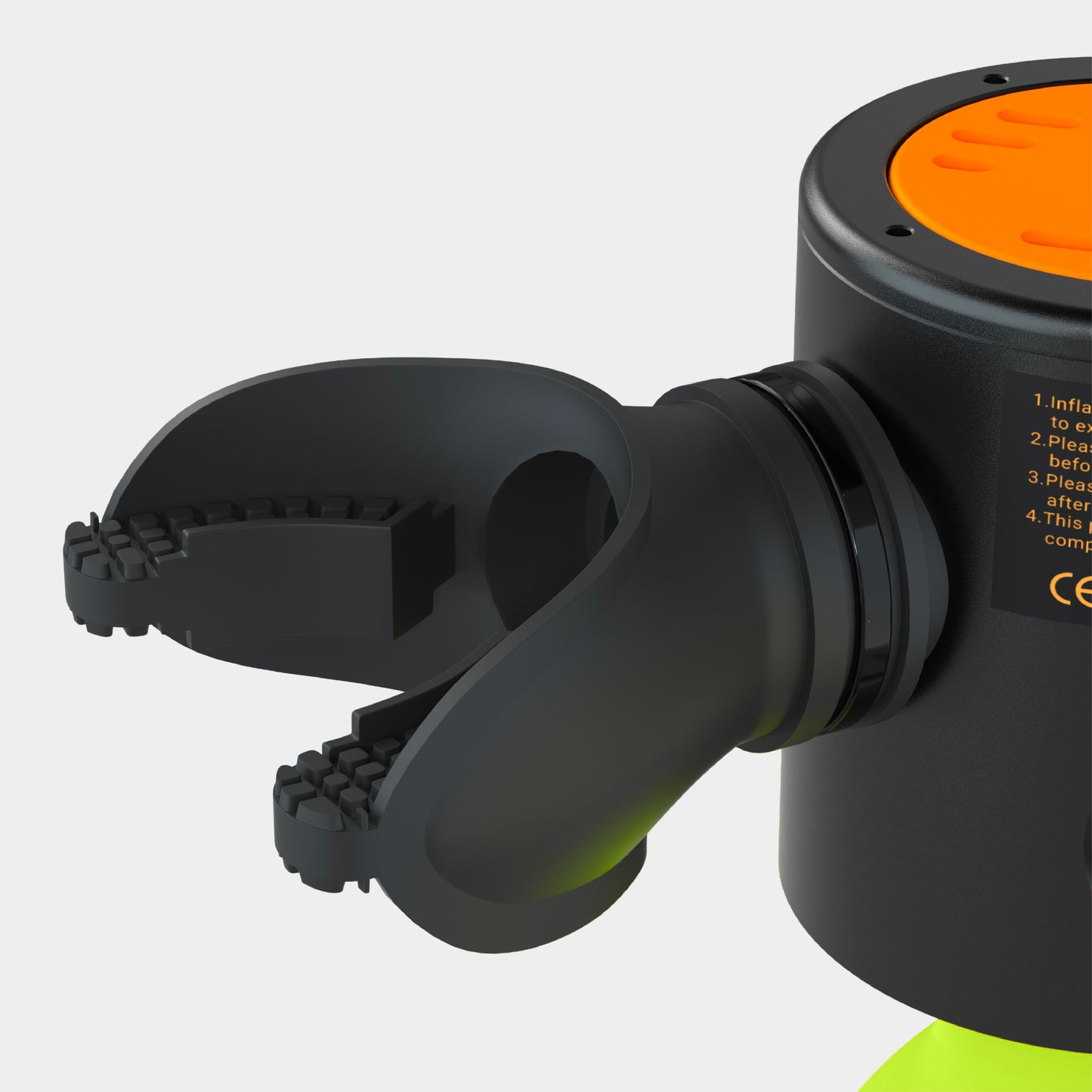
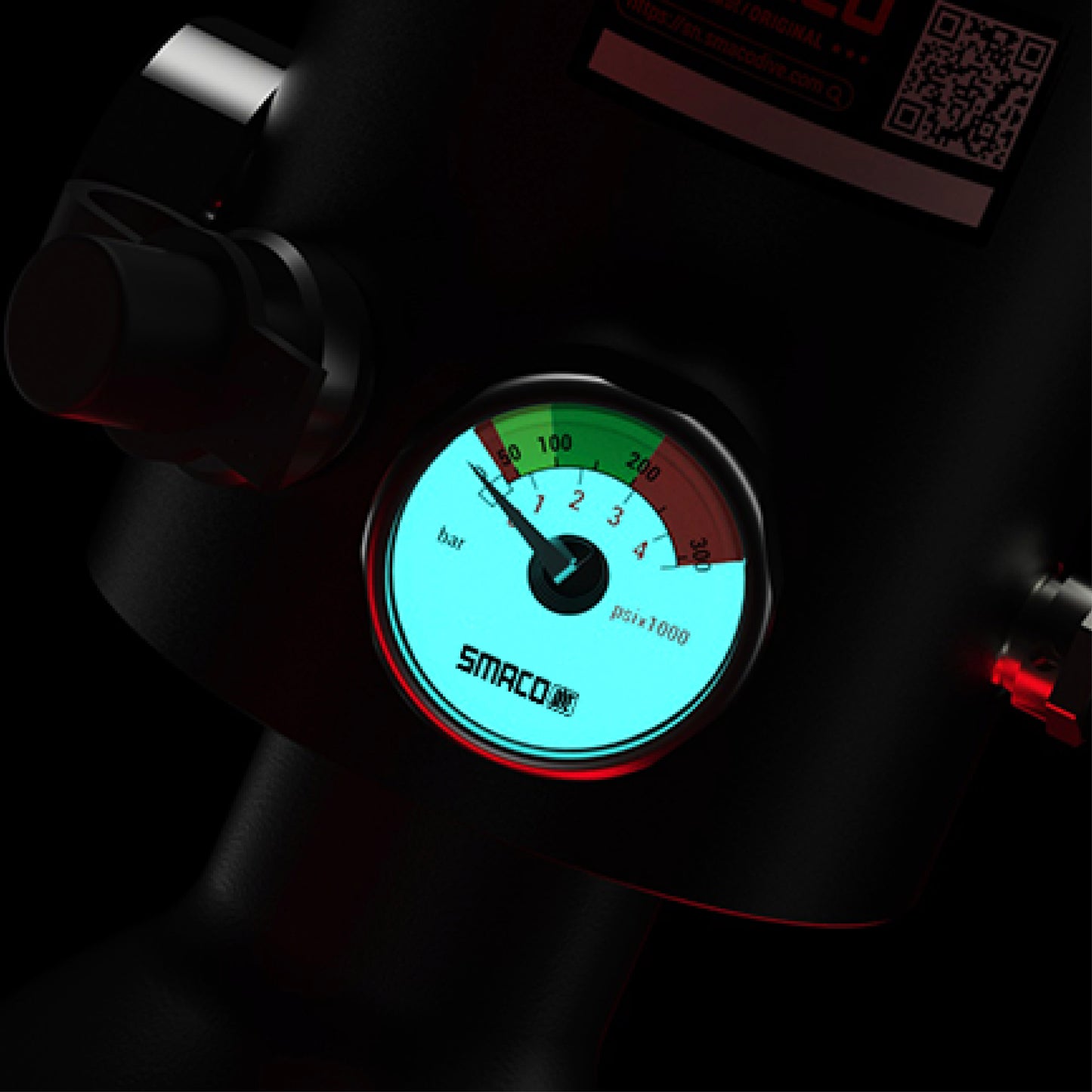
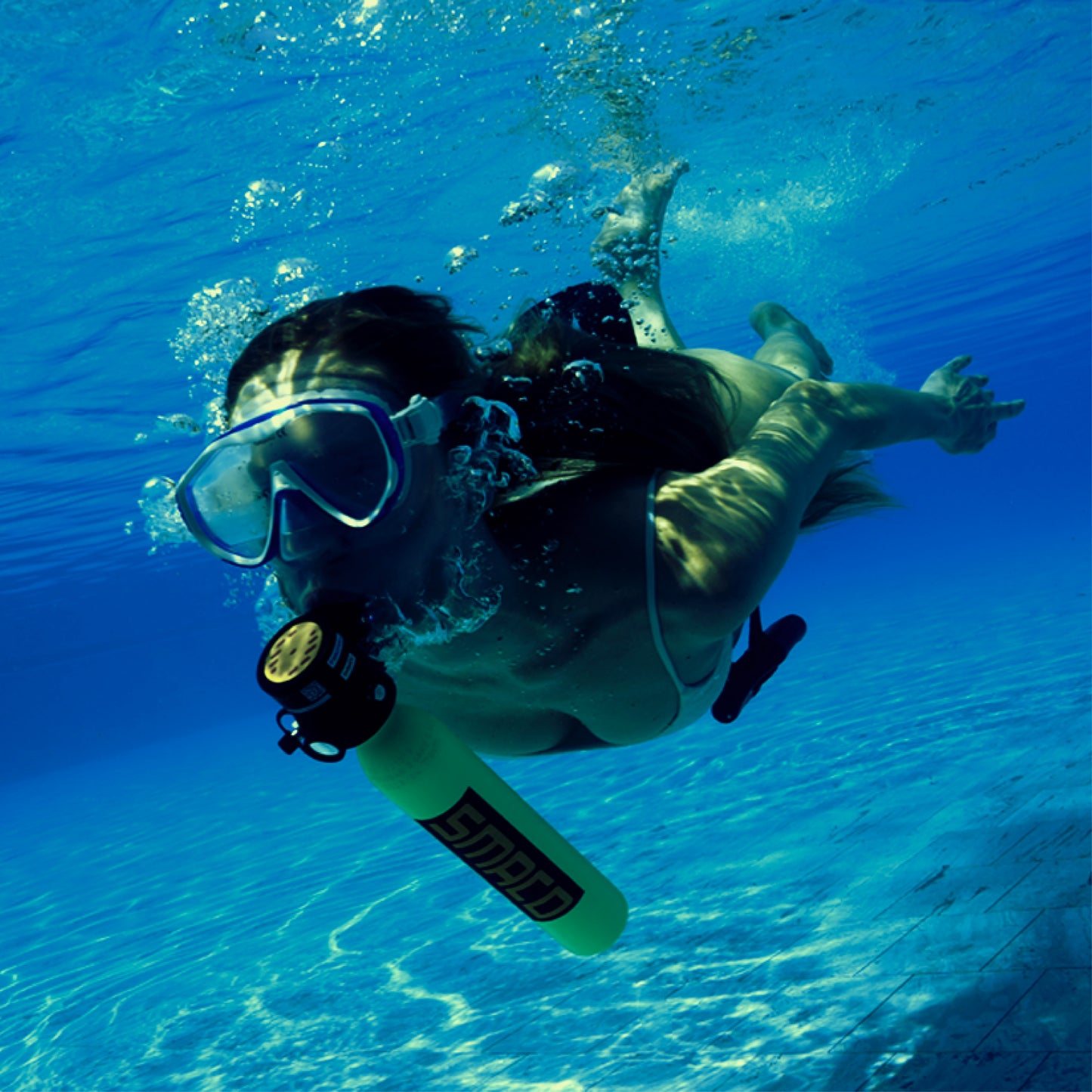





S300 0.5L Mini Scuba Tanks (2 Tanks)
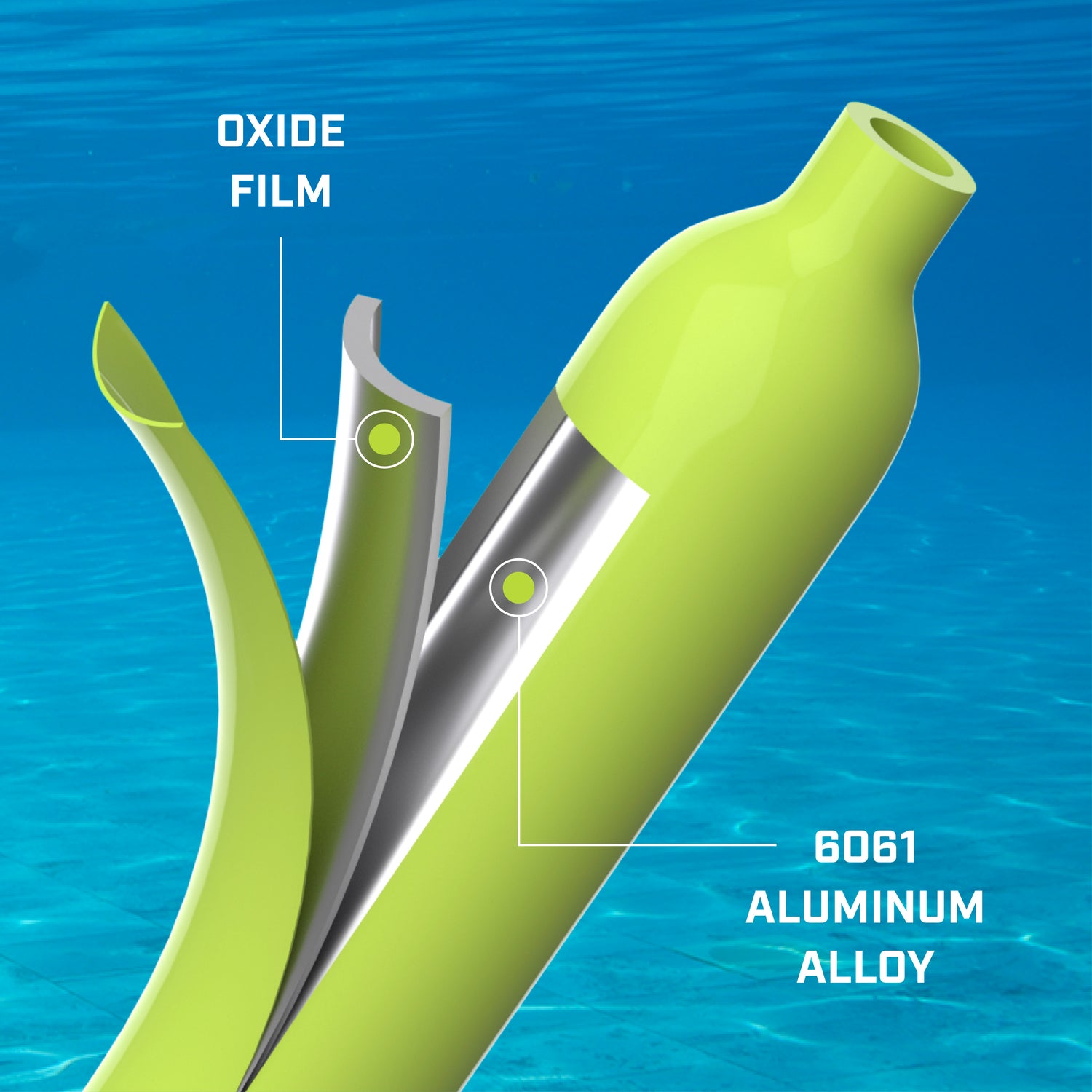
Pressure + Corrosion Resistant
Built from aviation-grade 6061 aluminum and reinforced with a protective oxide layer, the S300 is engineered to handle high pressure and resist saltwater corrosion—dive after dive.
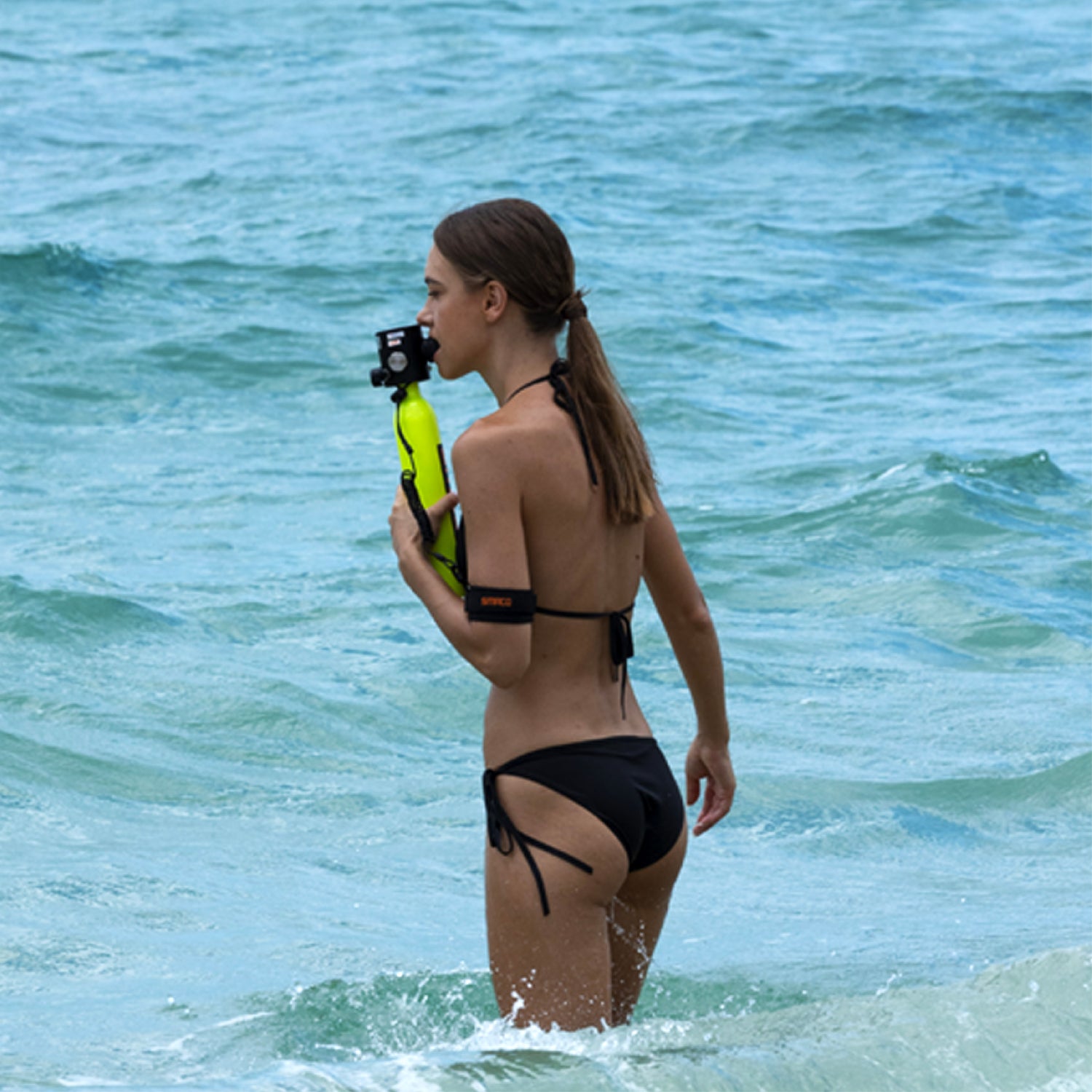
Lightweight + Travel-Ready
Weighs just under 2.5 lbs and slips easily into a beach tote, dry bag, or carry-on. Whether you’re heading to the pool, the pier, or paddleboarding off the coast, the S300 goes wherever adventure takes you.
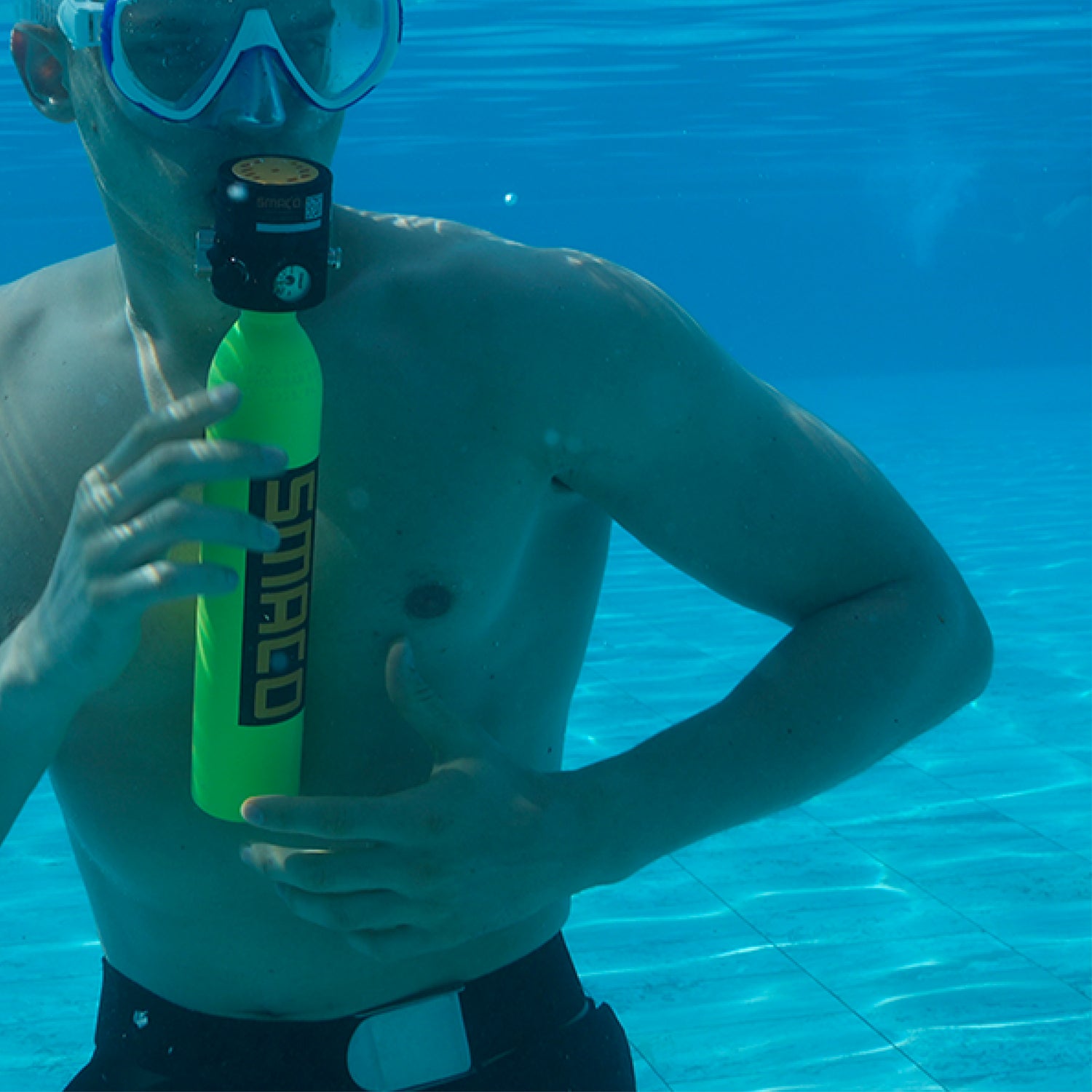
Streamlined for Easy Breathing
The fully integrated mouthpiece, regulator, gauge, and safety valve are built into one compact unit—reducing bulk and making setup fast and intuitive, even in high-stress situations.
Air supply for every scenario.
Whether you’re plugged in or off the grid, SMACO makes it easy to refill your tank anywhere.
-
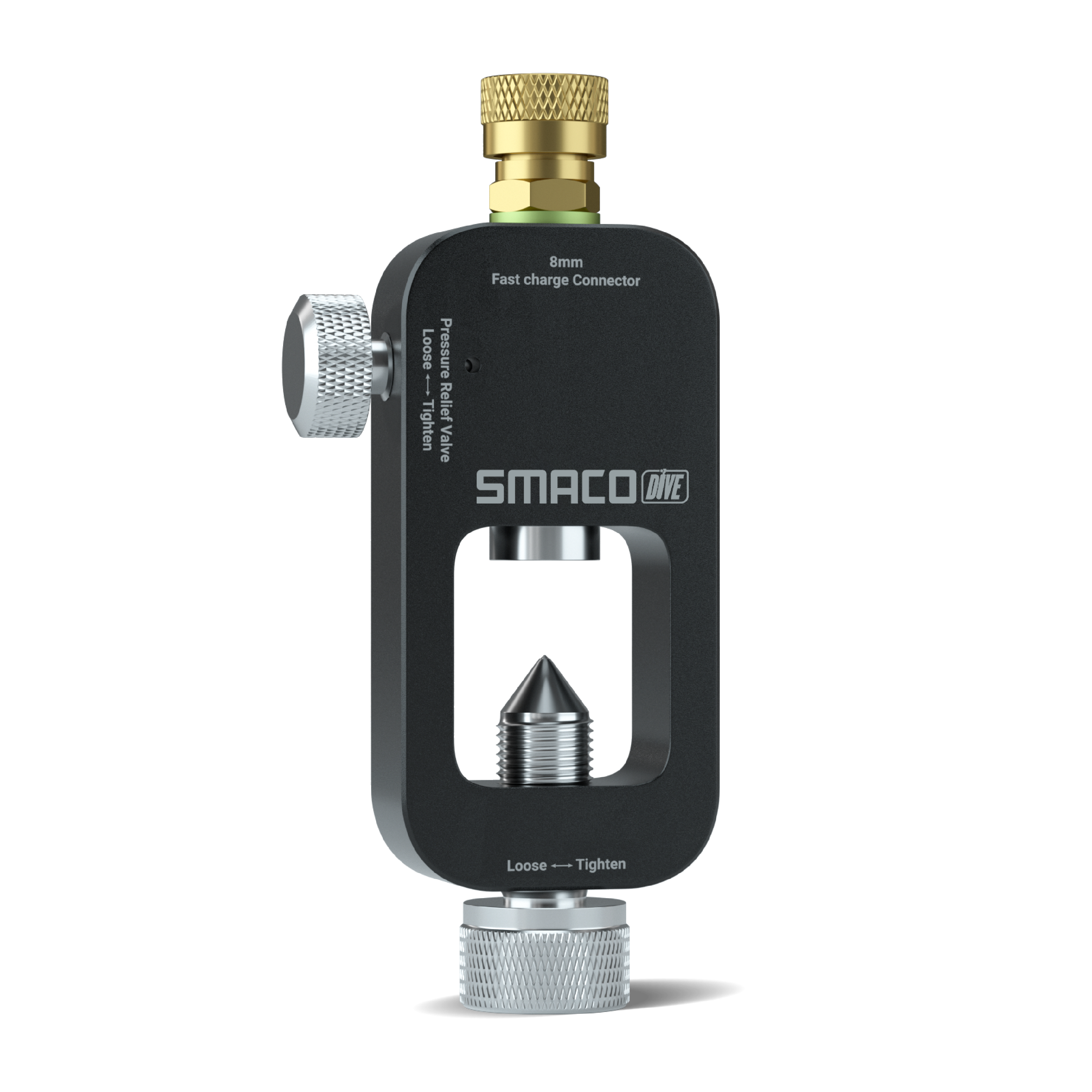
01
Transfer air from a
standard tank.The S-01 8mm Refill Adapter connects to a larger air supply for quick top-offs.
-
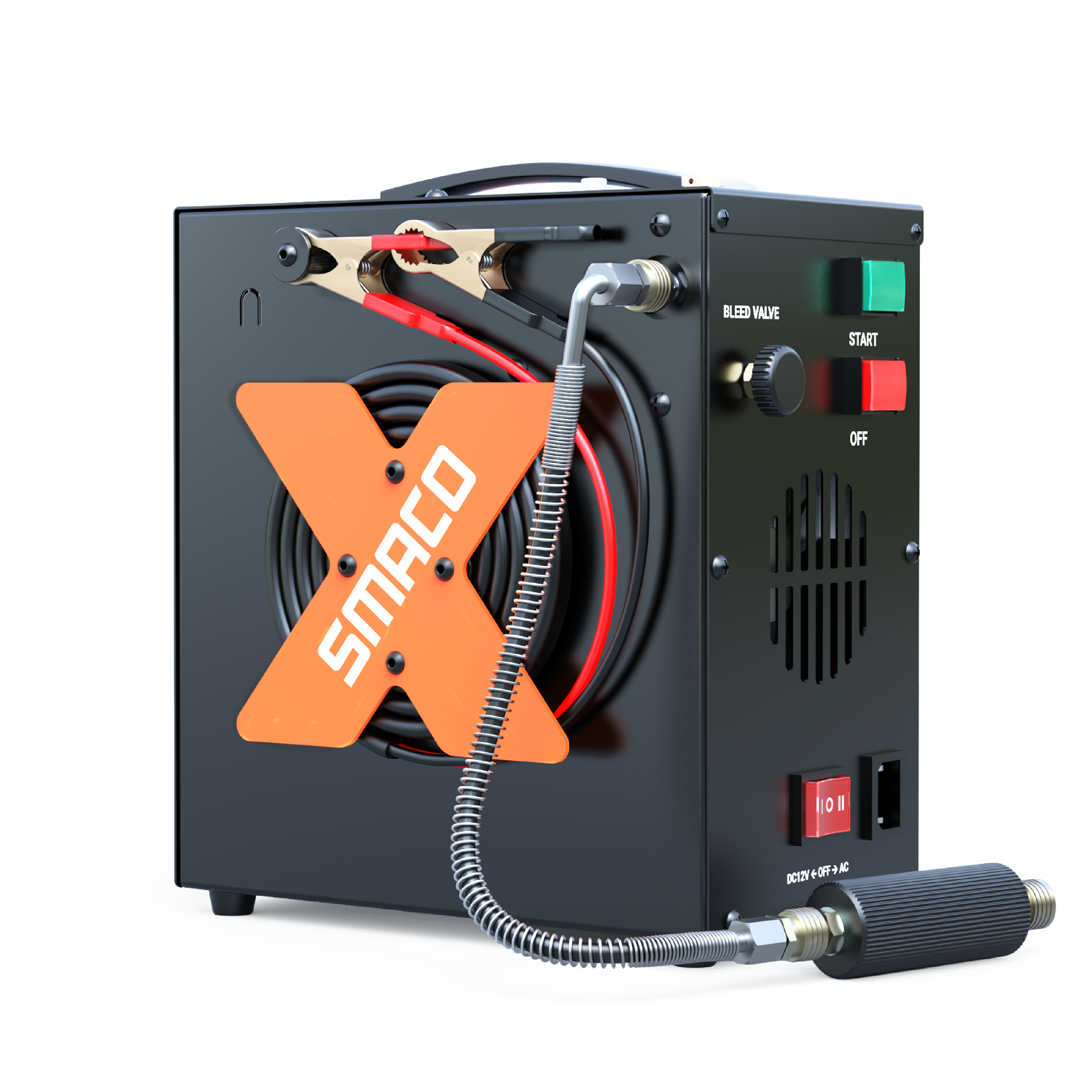
02
Refill quickly with an
electric pump.The Heap 1 Air Compressor runs on a 12V car battery or standard outlet.
-
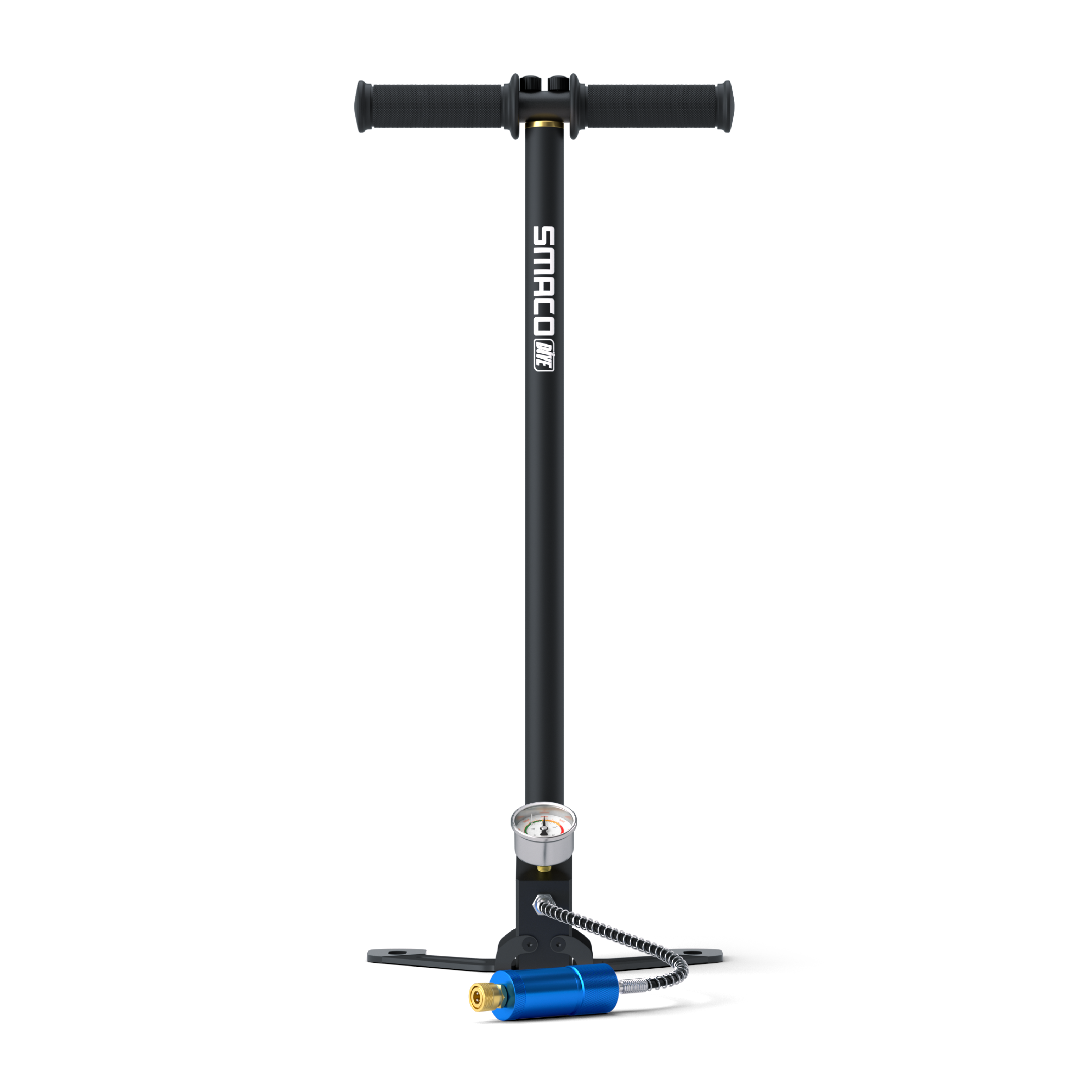
03
Pump manually
when off-grid.The High Pressure Hand Pump is fully portable; refills take about 20-30 minutes.
Frequently Asked Questions
What is the maximum operating depth of this product?
This product is suitable for use in waters up to 5 meters deep. It may be used at depths of up to 30 meters—but only as an emergency backup air source by certified divers.
How long does a full tank last?
Breathing time varies depending on depth, activity level, and breathing rate. On average, 0.5L tanks provide approximately 6–10 minutes of air at shallow depths. 1L tanks offer around 15–20 minutes, while 2L tanks may last 30–35 minutes.
Always monitor your pressure gauge during use. If the pressure gauge shows less than 2 MPa, return to the surface and refill before diving again.
Is certification required to use this product?
While certification is not required for shallow use, it is strongly recommended that all users receive proper instruction and certification from an accredited diving training agency. Improper use may lead to serious injury or death.
Can I use this product in cold water?
This product is designed for use in waters with temperatures above 10°C (50°F). Do not use in colder conditions.
Can I travel with this product?
Yes. Due to high-pressure regulations, cylinders must be empty and detached from the respirator when traveling by air. Always check with your airline’s policy beforehand.
What kind of air can I fill the tank with?
Only fill this tank with compressed air that meets human respiratory standards (EN12021). Do not use oxygen or other gases, as they may damage the internal system and pose safety risks.
What other precautions should I take before diving?
Before each dive, inspect the tank for any signs of damage or leaks and confirm it is fully pressurized. Do not use the product if it appears damaged or malfunctioning.
Never dive alone. Always dive with a partner to ensure safe operation.
Users over the age of 60 must obtain medical clearance from a doctor prior to use. This product is not suitable for pregnant individuals or those with medical conditions that make diving unsafe.
How often does the tank need servicing?
Have the product serviced annually by a professional. The gas cylinder requires a hydrostatic test every 5 years and should undergo visual inspection at least once a year.


